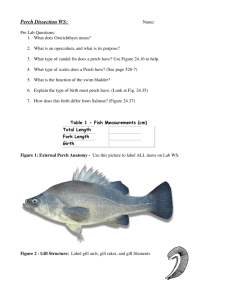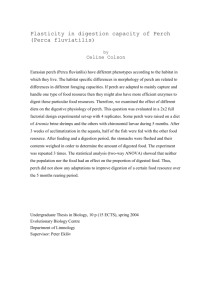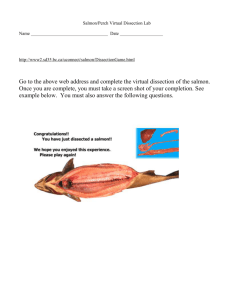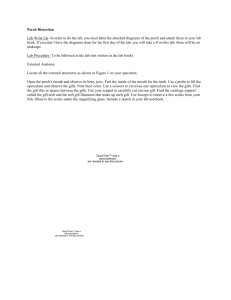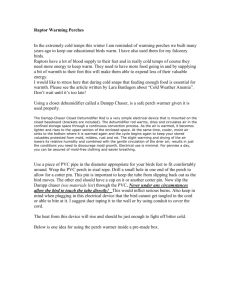Perch Dissection
advertisement
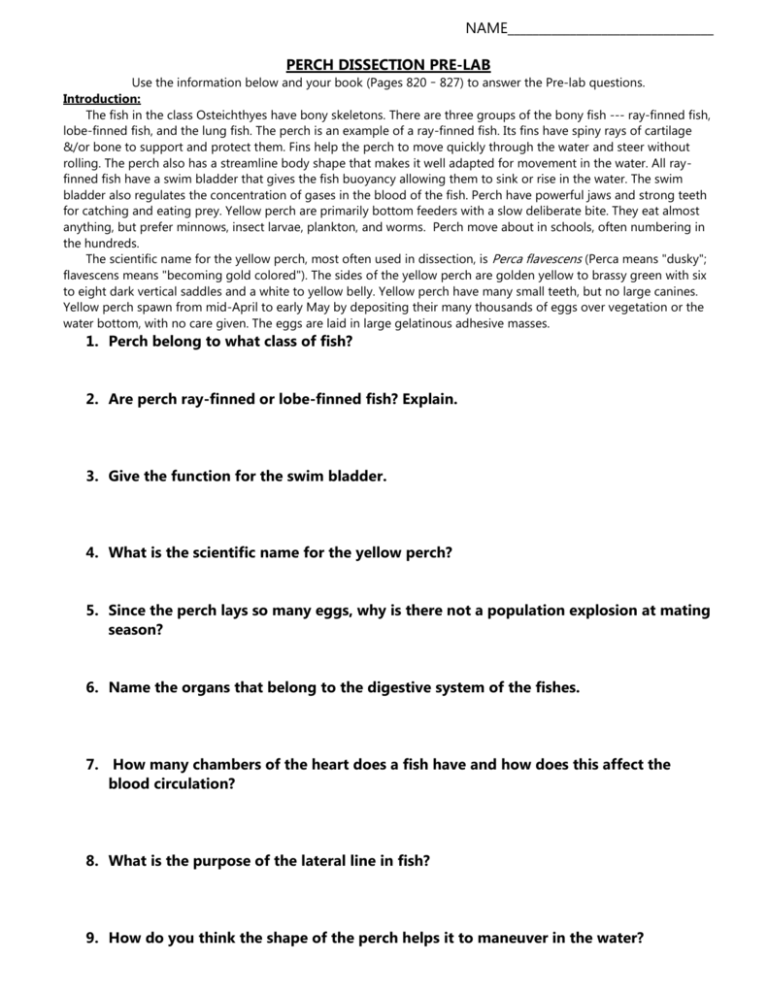
NAME_________________________________ PERCH DISSECTION PRE-LAB Use the information below and your book (Pages 820 – 827) to answer the Pre-lab questions. Introduction: The fish in the class Osteichthyes have bony skeletons. There are three groups of the bony fish --- ray-finned fish, lobe-finned fish, and the lung fish. The perch is an example of a ray-finned fish. Its fins have spiny rays of cartilage &/or bone to support and protect them. Fins help the perch to move quickly through the water and steer without rolling. The perch also has a streamline body shape that makes it well adapted for movement in the water. All rayfinned fish have a swim bladder that gives the fish buoyancy allowing them to sink or rise in the water. The swim bladder also regulates the concentration of gases in the blood of the fish. Perch have powerful jaws and strong teeth for catching and eating prey. Yellow perch are primarily bottom feeders with a slow deliberate bite. They eat almost anything, but prefer minnows, insect larvae, plankton, and worms. Perch move about in schools, often numbering in the hundreds. The scientific name for the yellow perch, most often used in dissection, is Perca flavescens (Perca means "dusky"; flavescens means "becoming gold colored"). The sides of the yellow perch are golden yellow to brassy green with six to eight dark vertical saddles and a white to yellow belly. Yellow perch have many small teeth, but no large canines. Yellow perch spawn from mid-April to early May by depositing their many thousands of eggs over vegetation or the water bottom, with no care given. The eggs are laid in large gelatinous adhesive masses. 1. Perch belong to what class of fish? 2. Are perch ray-finned or lobe-finned fish? Explain. 3. Give the function for the swim bladder. 4. What is the scientific name for the yellow perch? 5. Since the perch lays so many eggs, why is there not a population explosion at mating season? 6. Name the organs that belong to the digestive system of the fishes. 7. How many chambers of the heart does a fish have and how does this affect the blood circulation? 8. What is the purpose of the lateral line in fish? 9. How do you think the shape of the perch helps it to maneuver in the water? 10. How might an injury to a fish’s lateral line system affect that fish’s ability to escape predation? 11. Why was the evolution of jaws in fishes important? 12. Why do fish have scales? Why do different fish have different types of scales? 13. What is the duty of the operculum? 14. Sexual reproduction and spawning are both ways to produce offspring, but they are totally different. Explain how. Label the following external structures of the perch: Dorsal Fins (x2), Caudal Fin, Lateral Line, Anal Fin, Pectoral Fin, Pelvic Fins (x2), Scales, Operculum, Eye, Mandible, Nostril Name of fin Dorsal Number of Fins Function of fins 1 FORWARD MOVEMENT Pectoral Pelvic Anal Caudal
